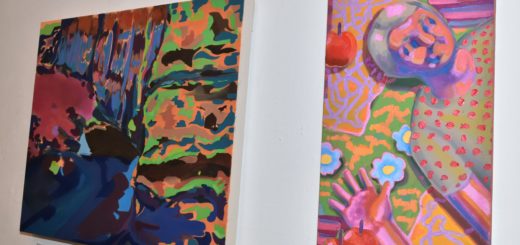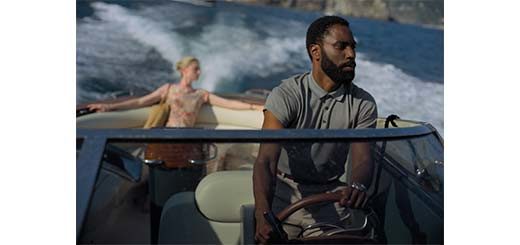NAMIBIA’S Otherworldly Ghost Town KOLMANSKOP
TRAVEL TO AFRICA is on the menu again. Hop aboard this time machine and escape to a ghost town on NAMIBIA’s Skeleton Coast where once drinking water was only fractionally cheaper than Bavarian beer. Today it’s one of the world’s hidden gems for film and photo shoots and a must-visit for super adventurous travelers. Here’s a little history lesson to wet your whistle together with a few recommendations as to where to STAY when you’re visiting.
With Special Credit for the Photo Stories to:
Xenia Ivanoff-Erb @photogalerie.swakopmund, @xenia.design.photography
Oscar Munar https://www.oscarmunart.com/about, @oscarmunart/
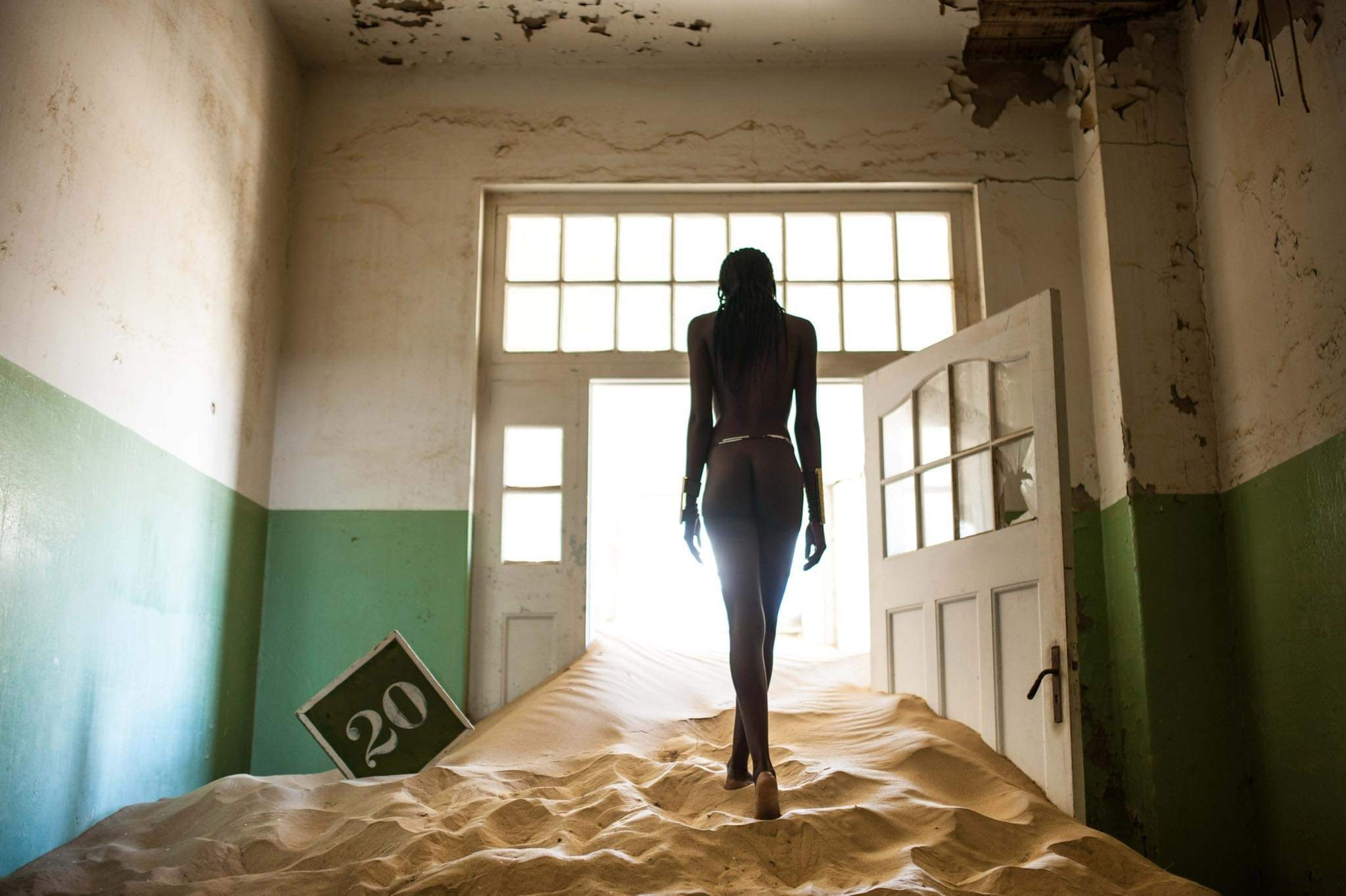
Image Credit Oscar Munar
Sand invasion! – at Kolmanskop
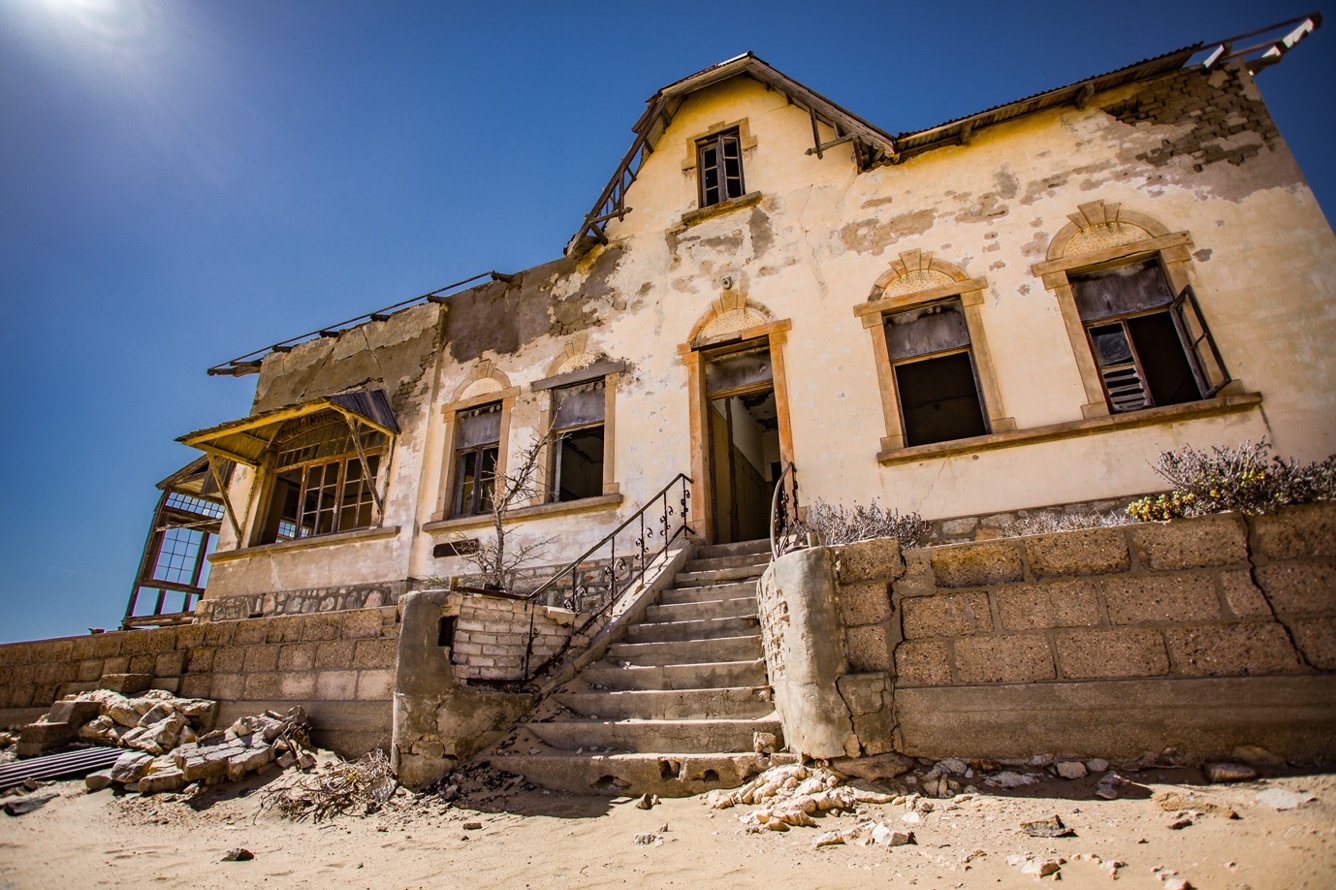
Image Credit Xenia Ivanoff-Erb
One of the once-opulent Baviarian houses that graced Kolmanskop
Watch one of the most iconic advertisements of all times for a South African brand of fruit juice, Liquifruit, shot at location Kolmanskop:
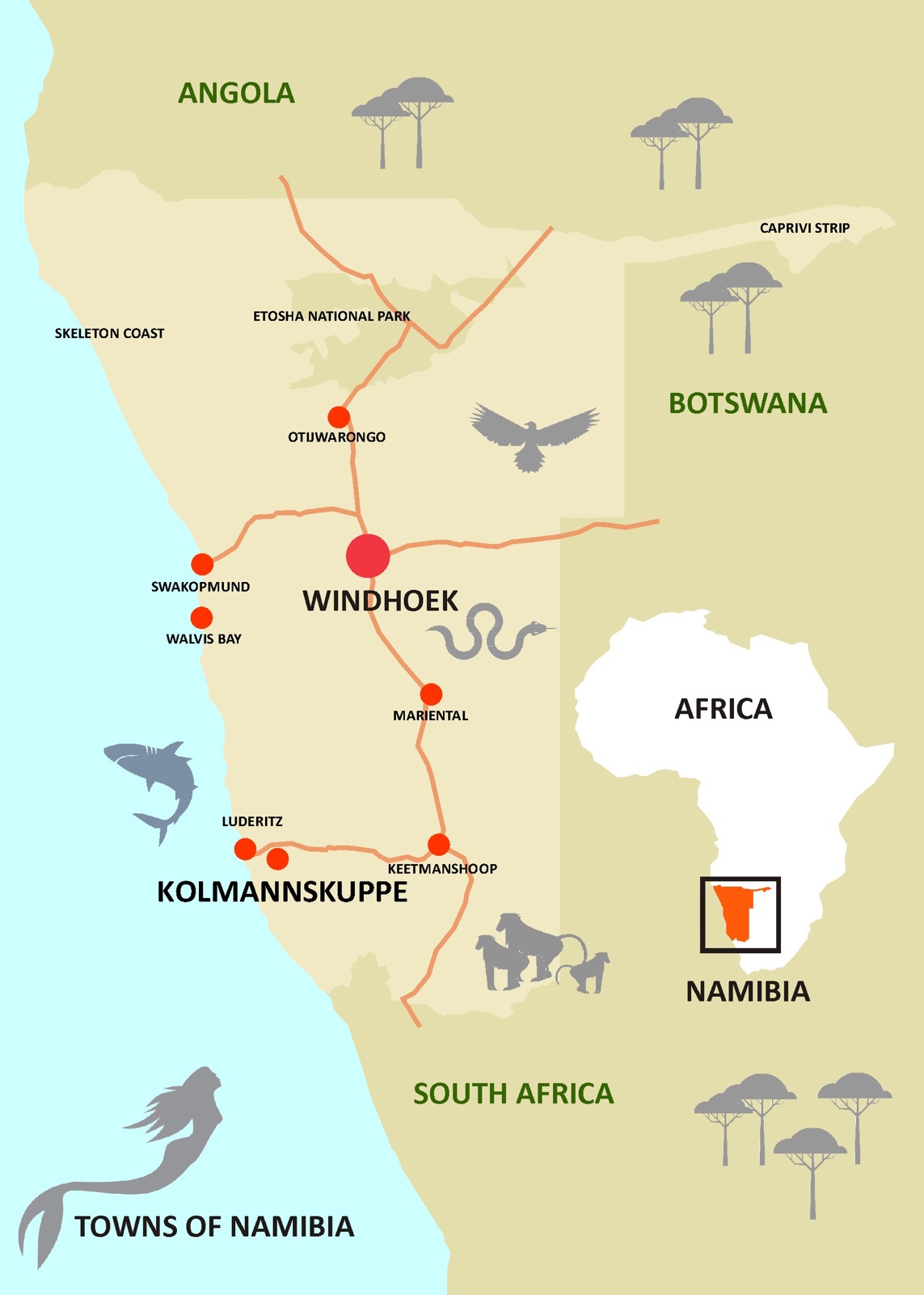
Graphics Credit Brian Paul
Map of Namibia showing the ghost town of Kolmanskop (Kolmannskuppe) close to the picturesque fishing village of Luderitz
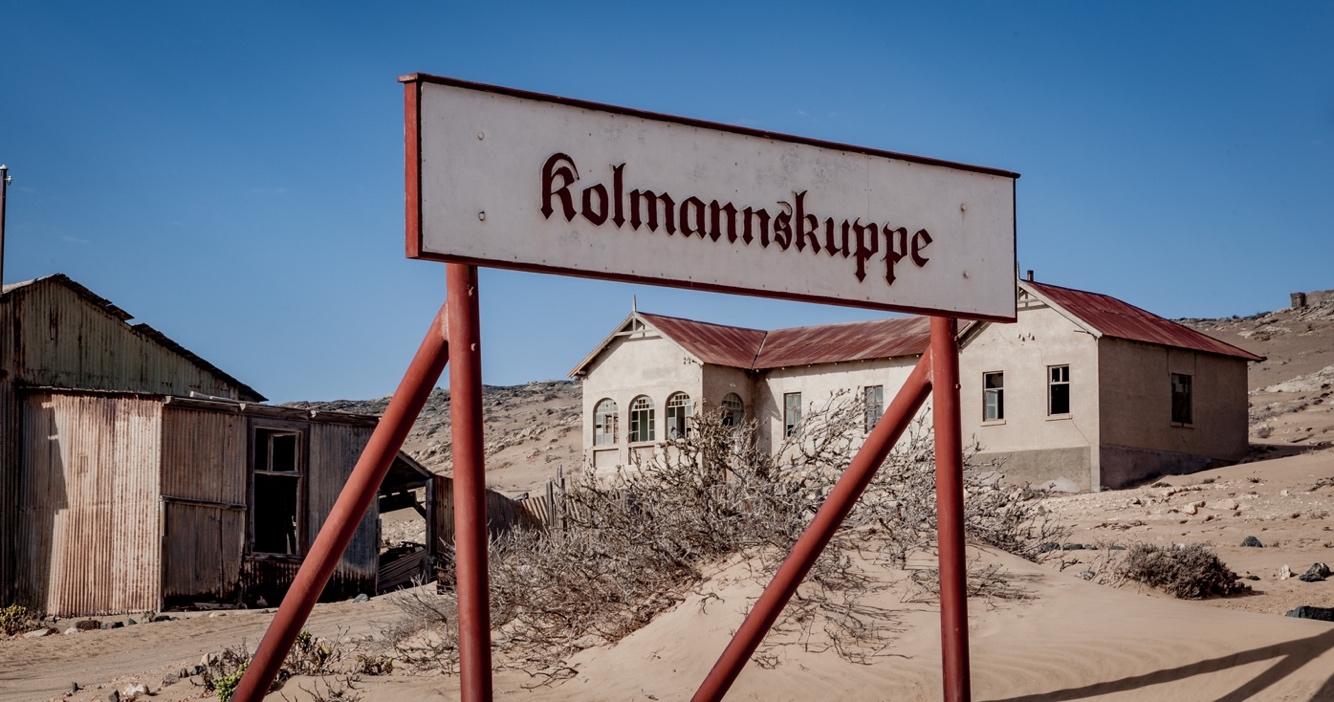
Image Credit Xenia Ivanoff-Erb
The entrance to the ghost town of Kolmanskop
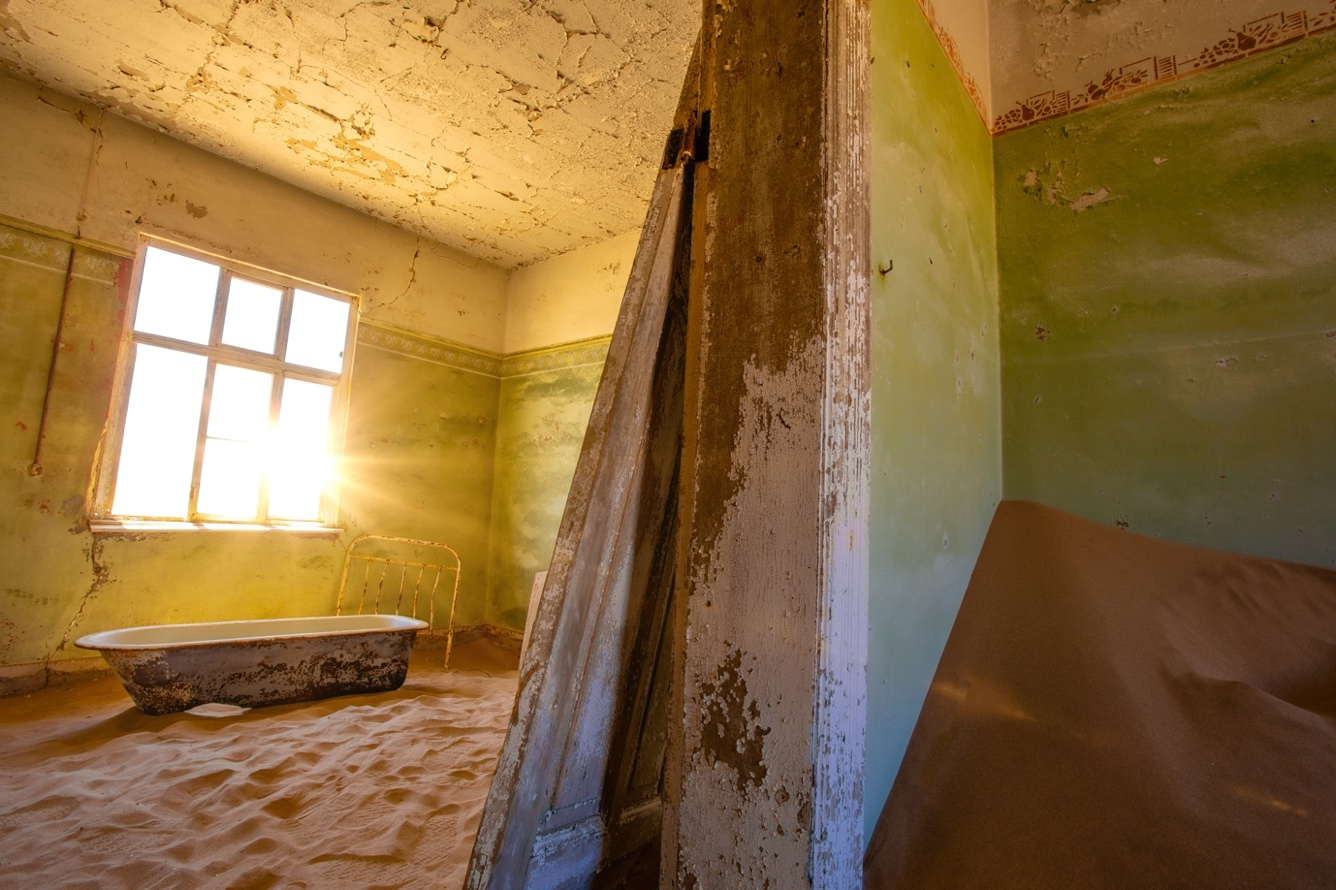
Image Credit Xenia Ivanoff-Erb
A sun-filled, now sand-filled bathroom that once was fit for a lady of leisure

Image Credit Tim Walker for British Vogue 2011. Model Agenyss Deyn
A throwback to Tim Walker’s classic set of images for British Vogue 2011. Close to Kolmanskop, Namibia

Image Credit Tim Walker for British Vogue 2011. Model Agenyss Deyn
A throwback to Tim Walker’s classic set of images for British Vogue 2011. Kolmanskop Pool

Image Credit Tim Walker for British Vogue 2011. Model Agenyss Deyn
A throwback to Tim Walker’s classic set of images for British Vogue 2011. Kolmanskop, Namibia

Image Credit Tim Walker for British Vogue 2011. Model Agenyss Deyn
A throwback to Tim Walker’s classic set of images for British Vogue 2011. Kolmanskop, Namibia

Image Credit Tim Walker for British Vogue 2011. Model Agenyss Deyn
A throwback to Tim Walker’s classic set of images for British Vogue 2011. Kolmanskop Desert

Image Credit Tim Walker for British Vogue 2011. Model Agenyss Deyn
A throwback to Tim Walker’s classic set of images for British Vogue 2011. Kolmanskop Visitors
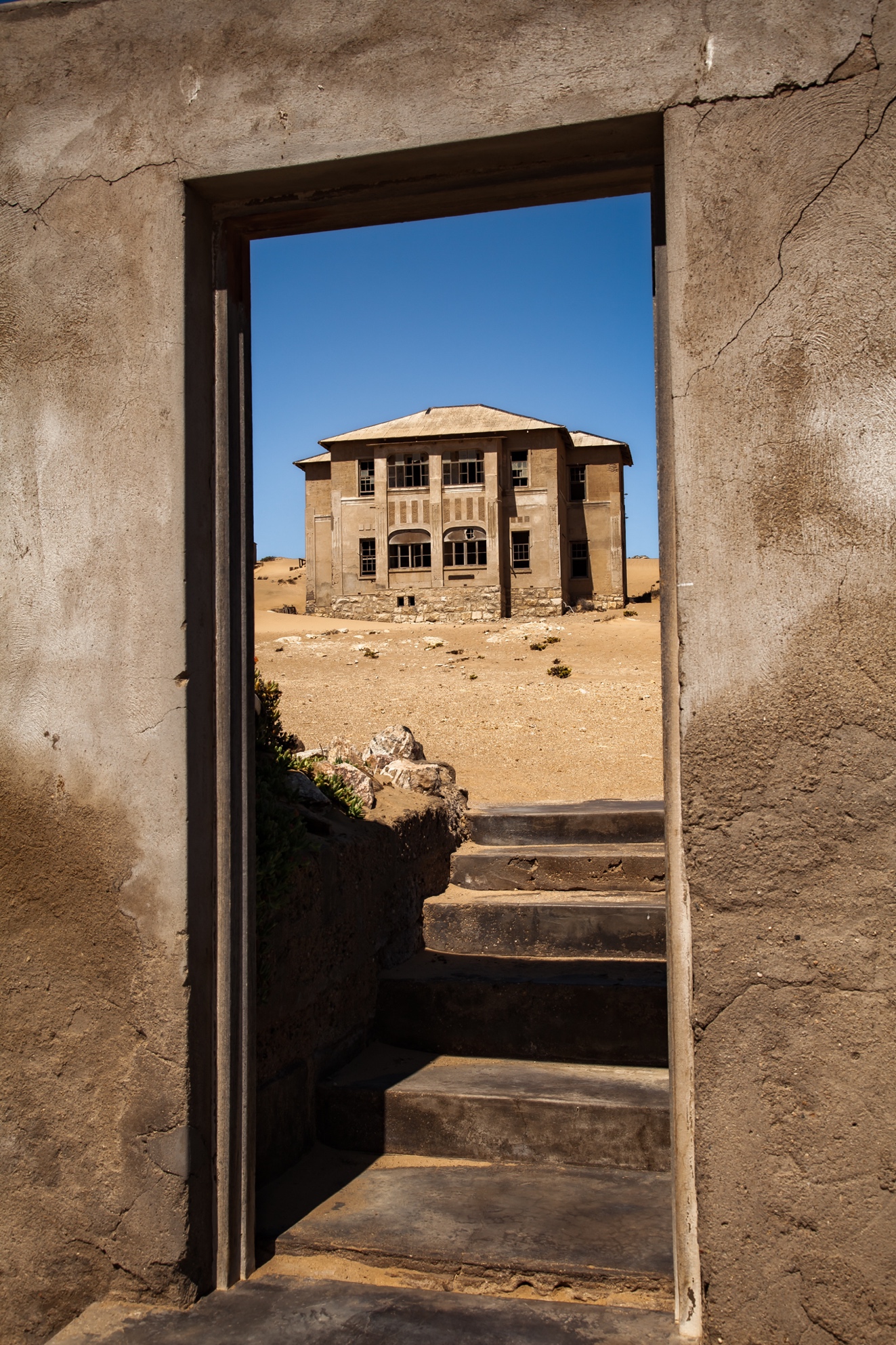
Image Credit Xenia Ivanoff-Erb
One of the grand villas of Kolmanskop
Once Upon a Time in Africa there was a thriving little settlement where inhabitants often partied all night, celebrating the abundant wealth and previously unseen prosperity that the tiny, shiny stones they plucked by the fistful from the desert sand had bought them. Home to the first tram in Africa (or rather mule drawn cart, which delivered water and bread to the houses), the very first X-ray machine in the Southern hemisphere and a transformer station that generated electricity by burning German-imported coal for the houses and their well-to-do inhabitants, this little establishment was literally firing on all cylinders.
That was 1912 and the location the south-western coast of what’s now called Namibia (then German South West Africa). However, as quickly as the settlement of Kolmanskop had become a bustling oasis in the desert, as rapid was its demise. By 1956 the diamond mines were thoroughly exhausted and overnight the inhabitants abandoned their little nirvana for greener pastures.
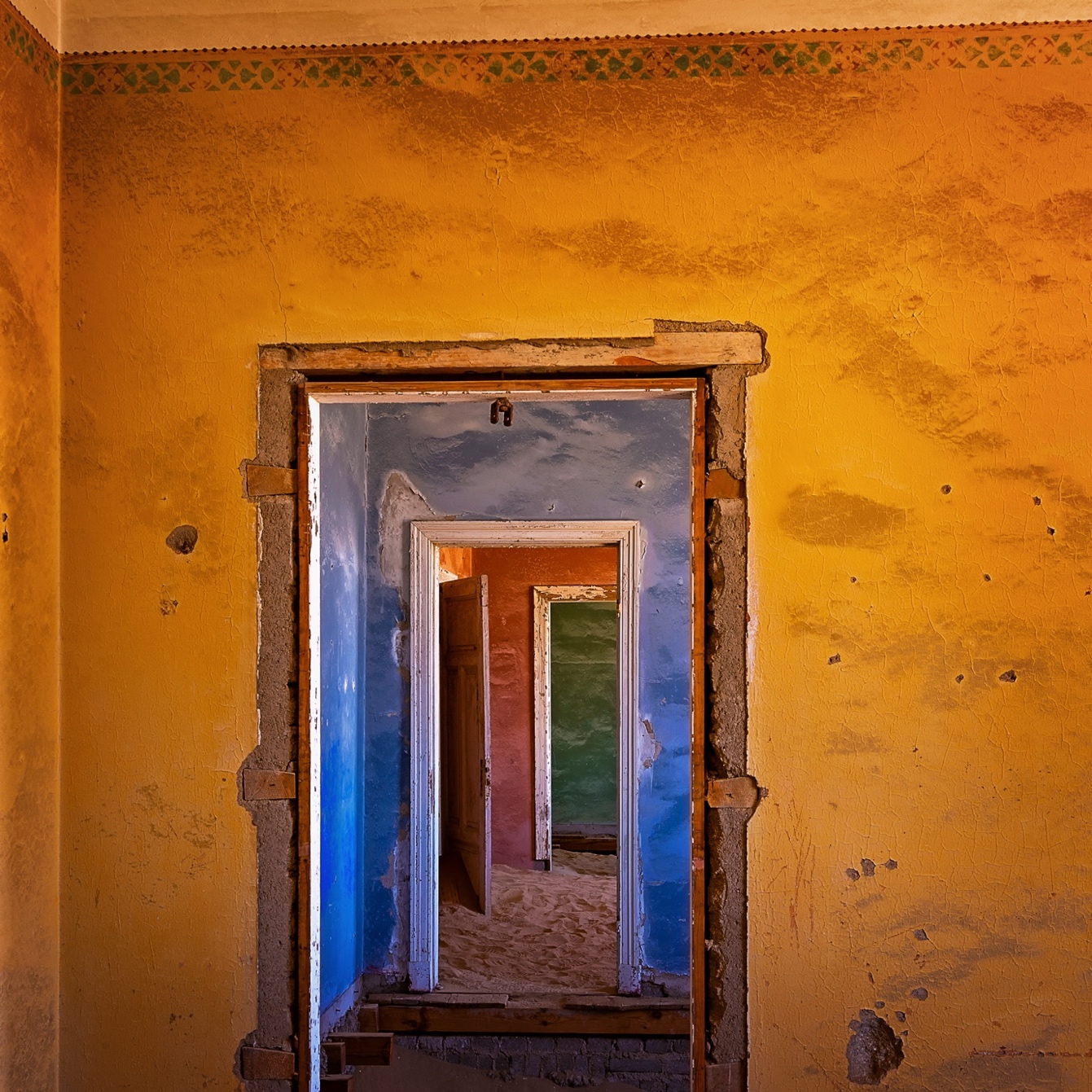
Image Credit Xenia Ivanoff-Erb
Brightly coloured wallpaper and paint slowly peel and fade in the desert heat – at Kolmanskop
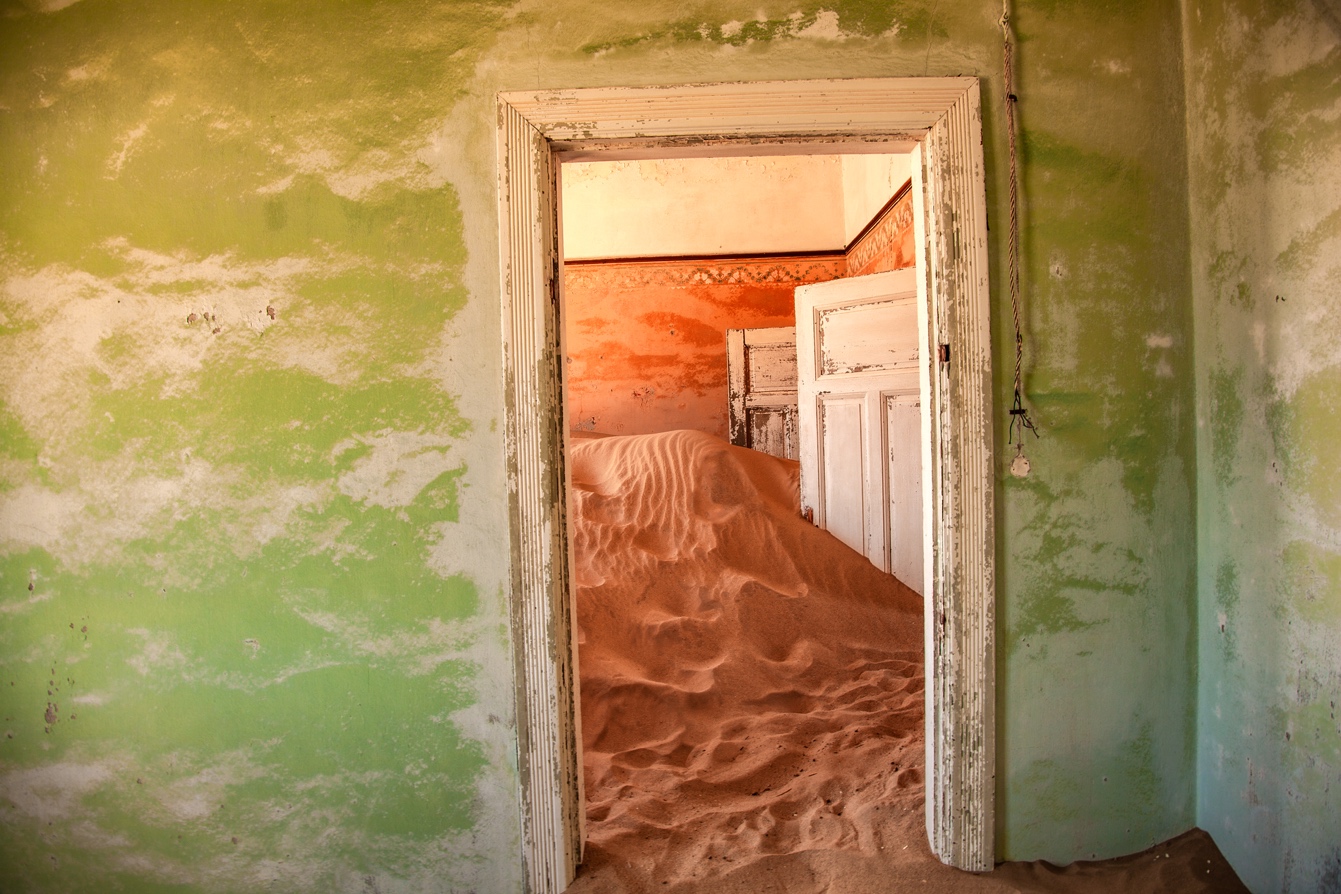
Image Credit Xenia Ivanoff-Erb
The desert sand reclaims the town – at Kolmanskop
But while diamonds were abundant, the town flourished beyond belief. A state-of-the-art hospital, an elegant dance hall, a theatre for budding thespians and ‘imported’ performers (opera companies were shipped from Europe to the depths of the desert to perform and entertain!), a bowling alley, casino, post office, police station and school complete with gym equipment that compared with the best in Germany, were all part and parcel of bustling life in Kolmanskop.
Crates of indulgently sumptuous frocks, elaborate ball gowns and dapper tuxedos made their way through the dusty desert to waiting debutantes. Picture the sheer opulence of getting dressed up in a beaded belle epoch frock the desert – a far cry from the cobbled sidewalks of Bavaria! However, European life was being imitated as far as travel and transport allowed: the general dealer stocked caviar, chocolate and camembert, the restaurant boasted a champagne room for the ladies and cigar room for their mensfolk!
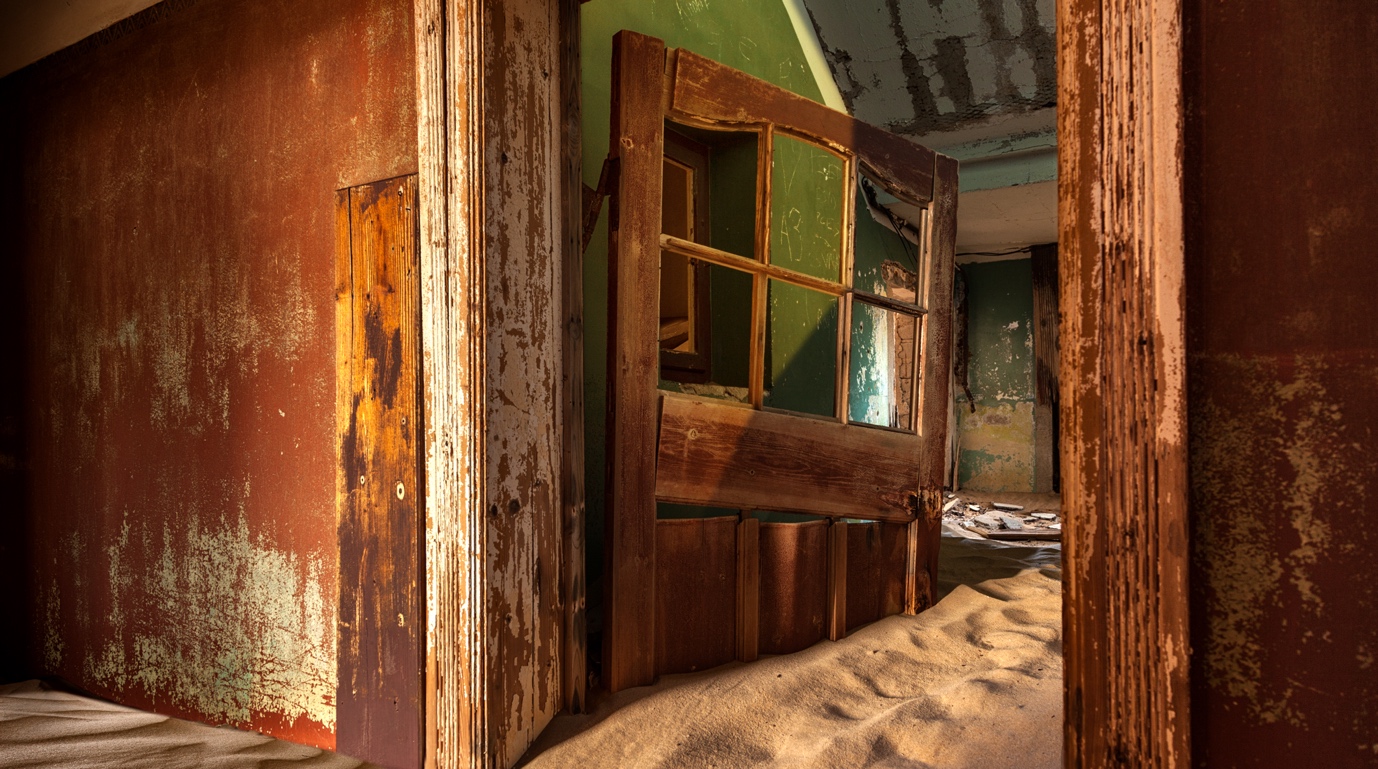
Image Credit Xenia Ivanoff-Erb
The scorched doors and windows can no longer hold back the sand invasion – at Kolmanskop
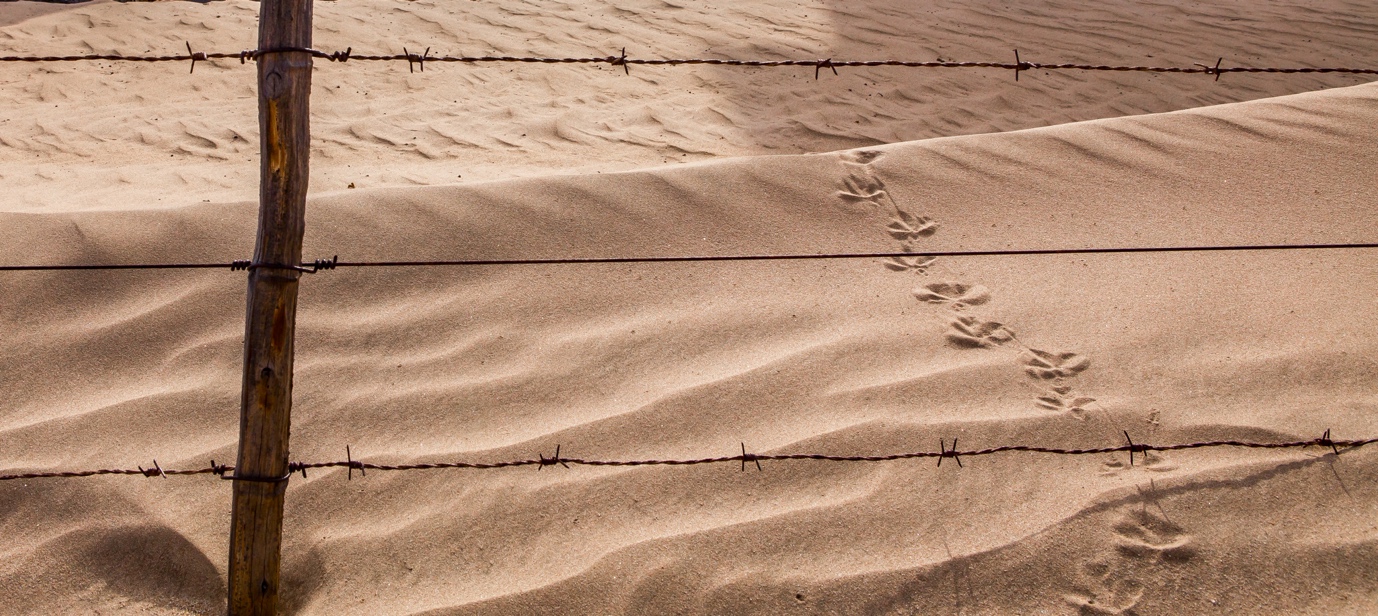
Image Credit Xenia Ivanoff-Erb
The only residents now are animals – at Kolmanskop
The solid-brick Bavarian-style houses complete with imported Russian green wallpaper, thick crimson paint, elaborate wall tiles and fine floorboards flanked the dusty streets and just before the sun set over the Atlantic Ocean one inhabitant of this desert village would routinely take her pet ostrich for a stroll along the main street of Kolmanskop. Such was the desire to imitate Europe in the desert that allegedly the same ostrich was employed one Christmas to pull Santa’s sleigh in an attempt to bring a little Bavarian magic to the Namib Desert.
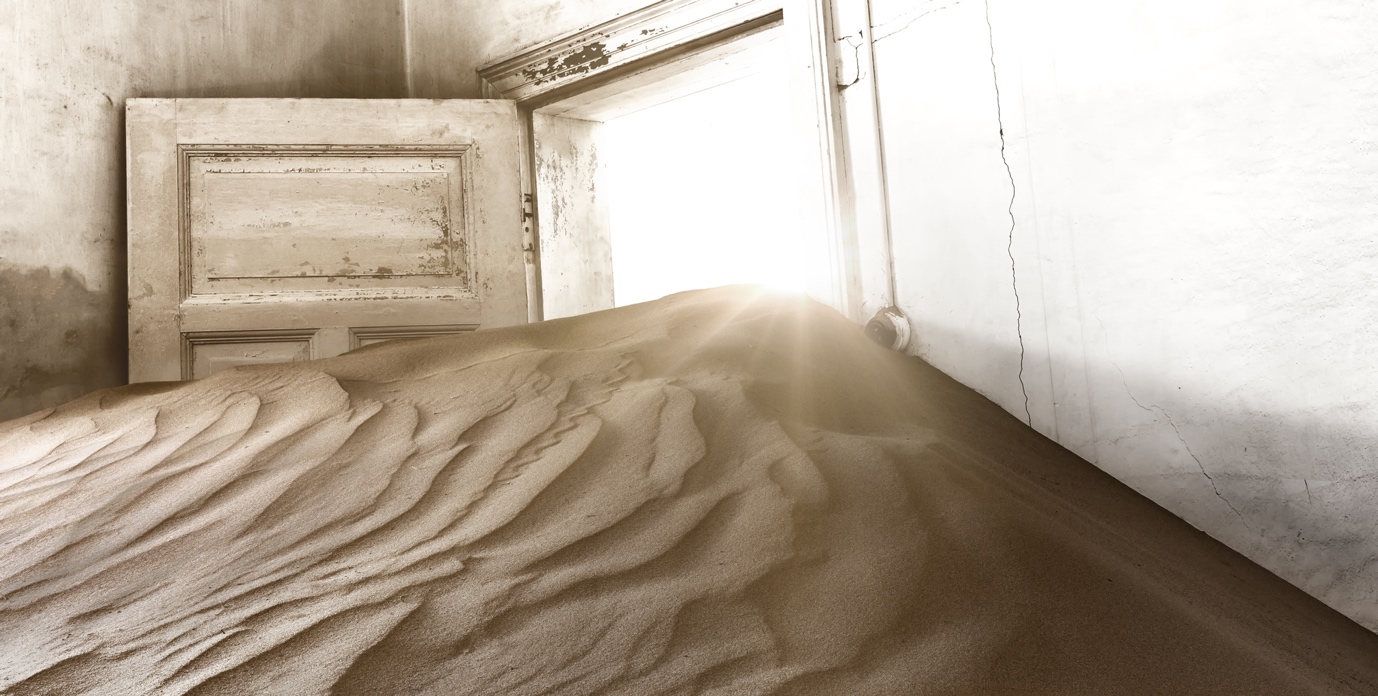
Image Credit Xenia Ivanoff-Erb
Sand! The desert returns – at Kolmanskop
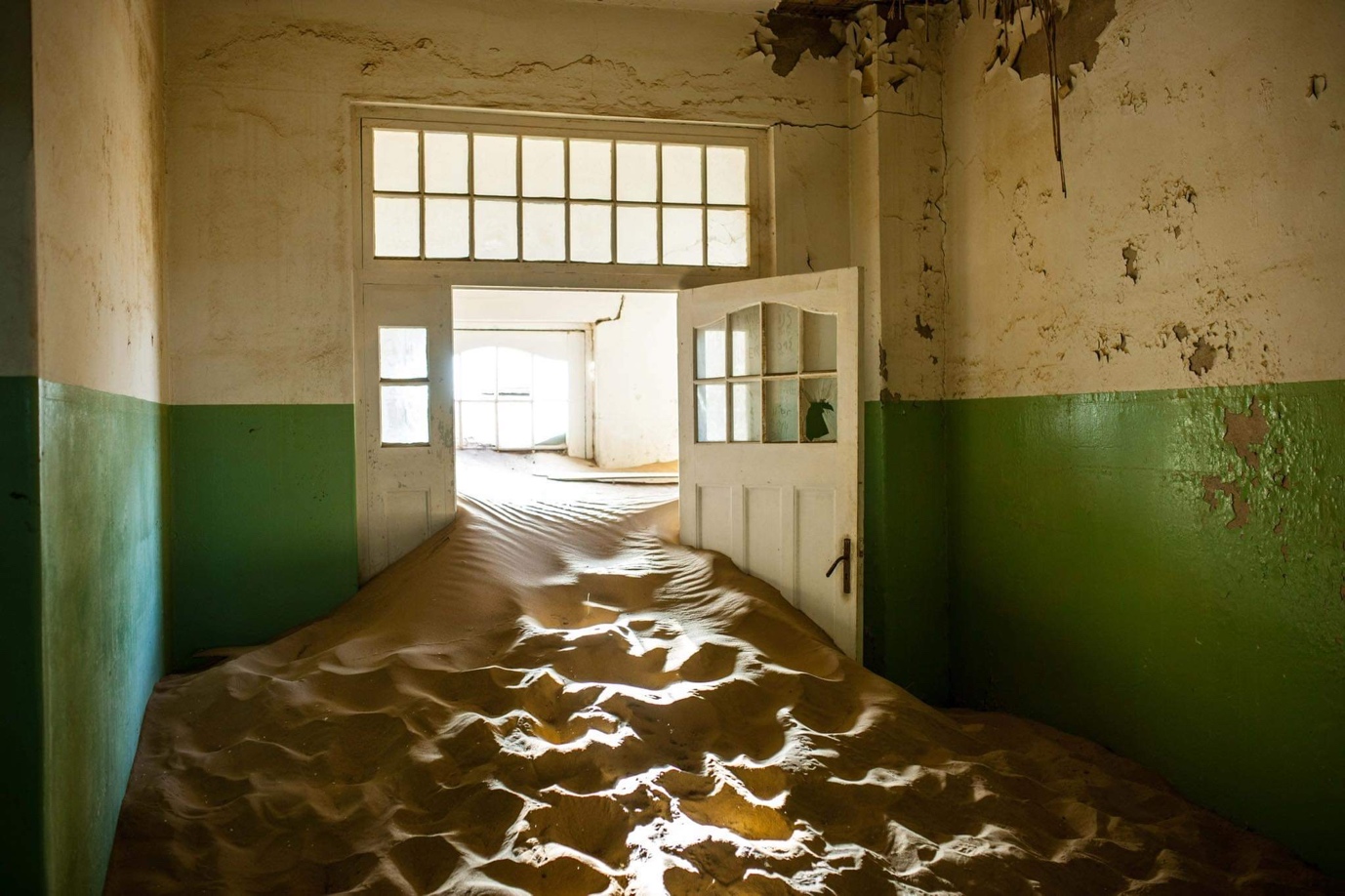
Image Credit Oscar Munar
More sand! – at Kolmanskop
The 1300 inhabitants of Kolmanskop had the highest per capita income in the world at the time as they were single-handedly mining 12% of all the world’s diamonds. The indulgence knew no limits. Picture this, water was transported through the desert to keep the inhabitants’ gardens lush and even an ice factory was erected so that lemonade (yes, lemonade!) could be made for the thirsty colonials who flocked from Germany to this little get-rich-quick settlement. Apparently the tank that was used to wash the diamonds and make the ice also served as a swimming pool over weekends. Drinking water was imported from Cape Town, 1000 tons once a month, little wonder then that drinking water was only ever so slightly cheaper than Bavarian beer! Hobson’s choice, eh?
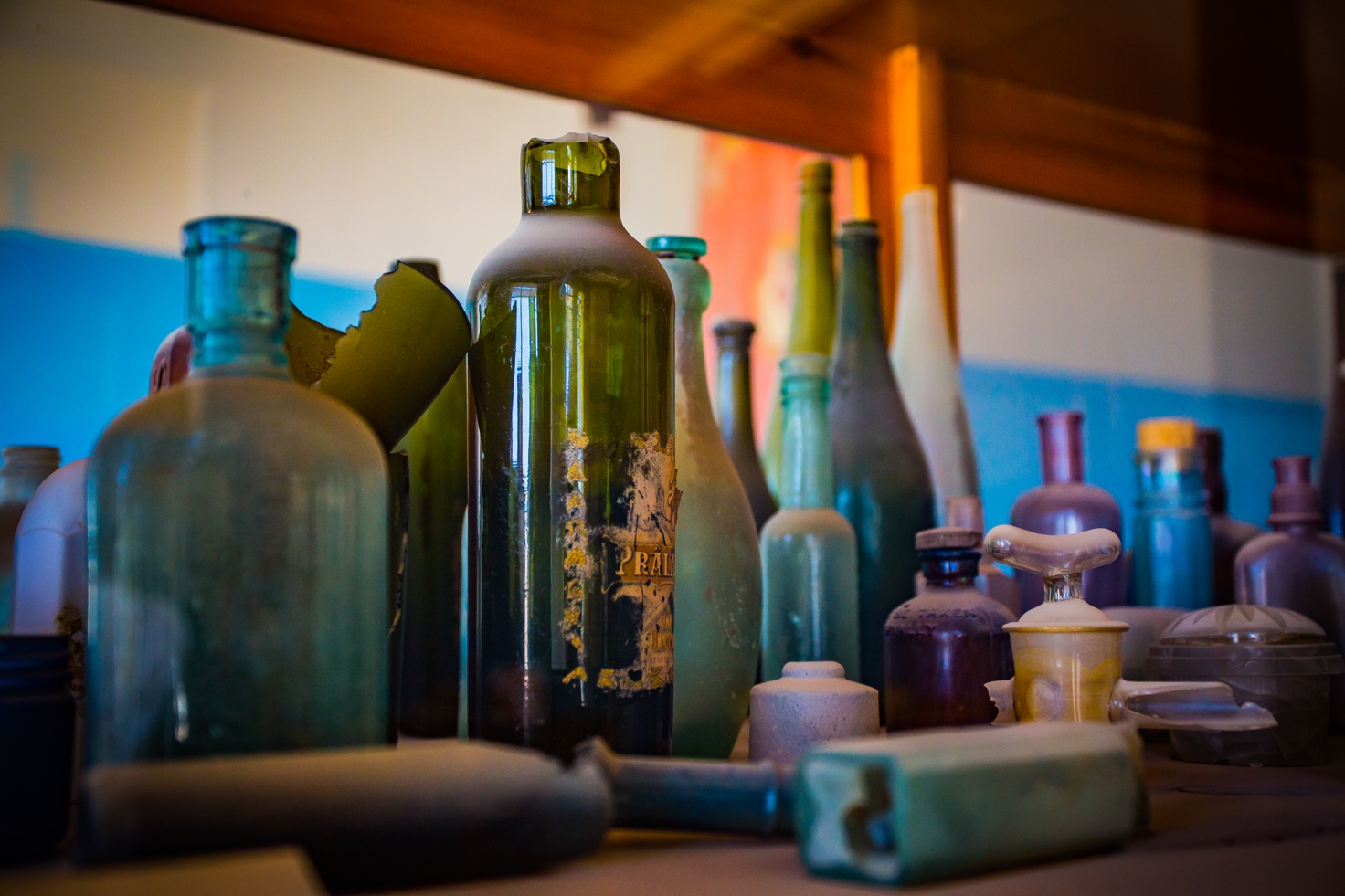
Image Credit Xenia Ivanoff-Erb
Some of the coloured glass bottles from a time where liquid was so precious – at Kolmanskop
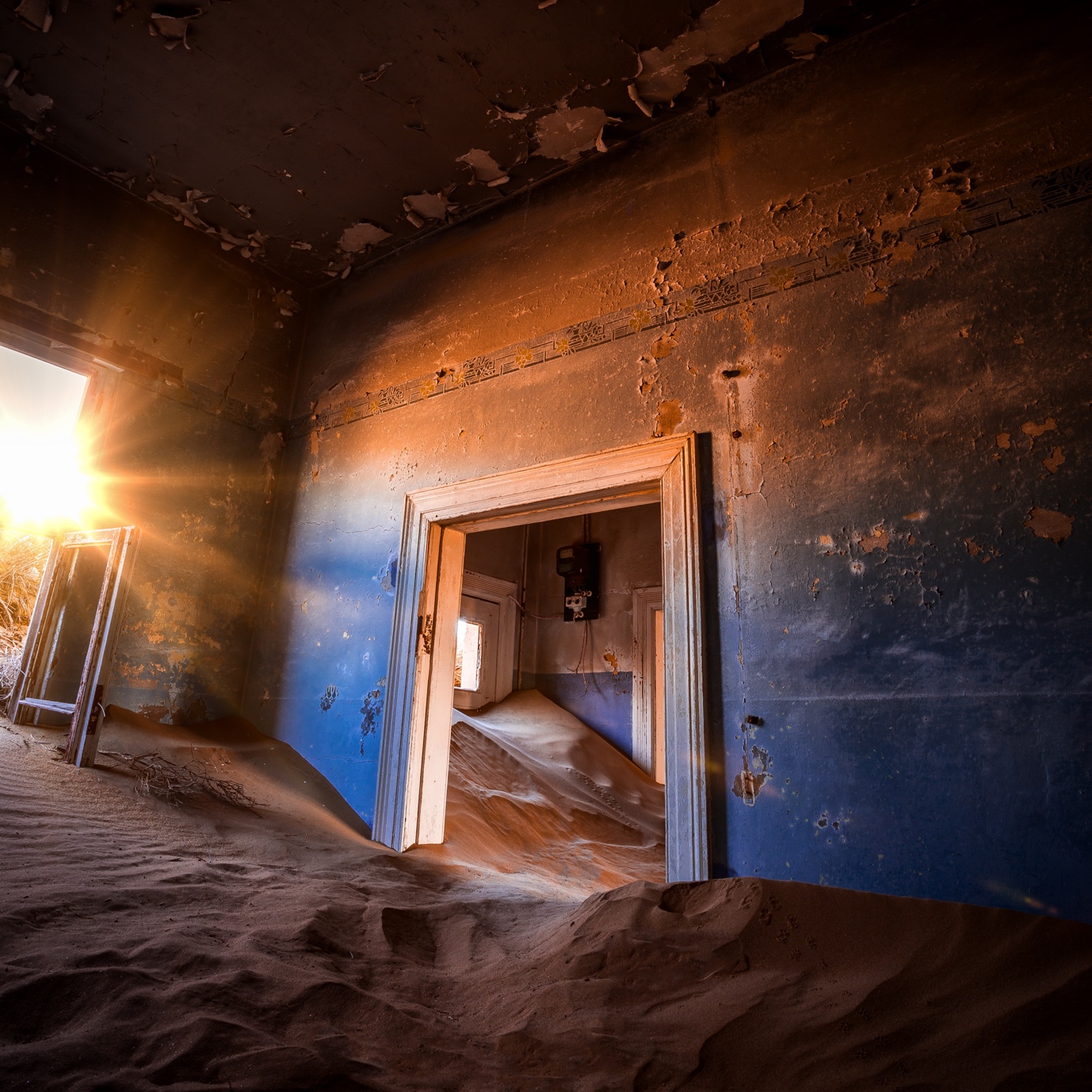
Image Credit Xenia Ivanoff-Erb
Day and night sees the sand marching in – at Kolmanskop
High human drama, gossip and Goethe-esque tales of love and woe, prosperity and grief – as would ensue in any other town of its size anywhere in the world – played out here. Small-town politics and a substantial dose of social hierarchy were also alive and well in Kolmanskop: the architect, mine manager and engineer had dwellings that were set apart, more solidly built and more lavishly appointed than that of, for example, the ‘lowly’ teacher (who, apparently was thoroughly disliked by the architect). Urban legend has it that the engineer had two beautiful daughters who broke the hearts of many a lovelorn suitor. Allegedly, to the engineer’s horror and no doubt countless sleepless nights, the ‘bachelors’ quarters’ were located right next door to the engineer’s house – the stuff of modern-day soap operas!
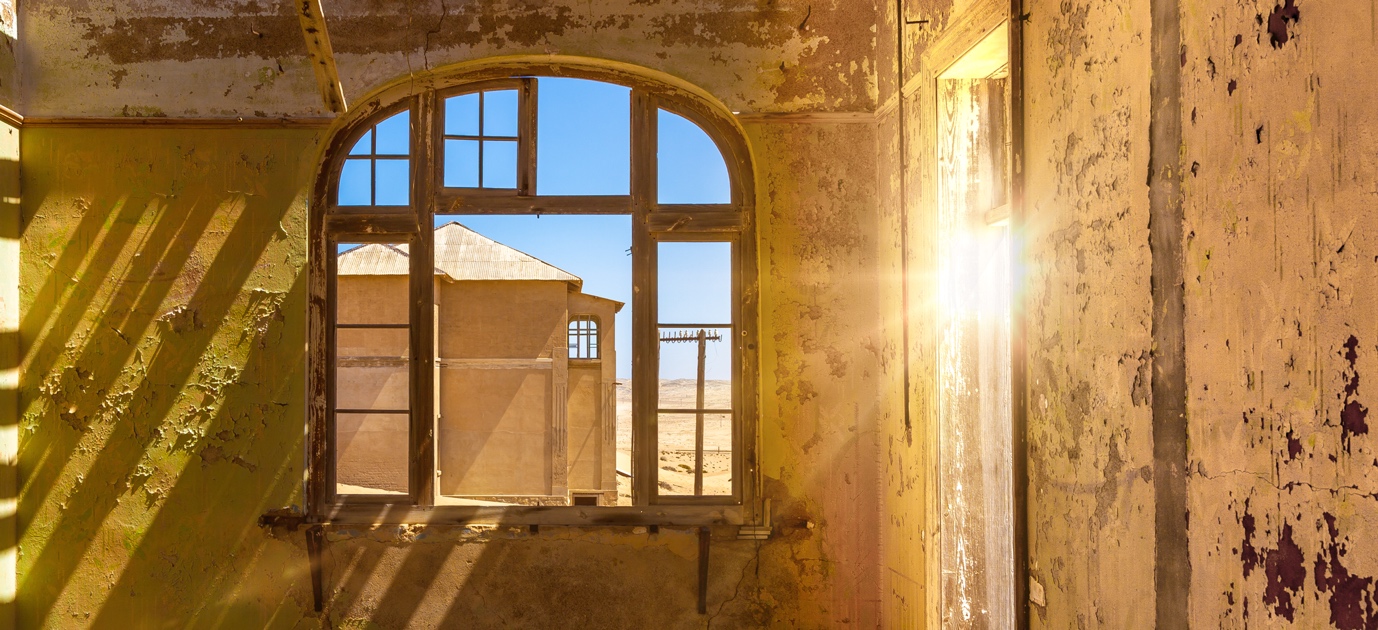
Image Credit Xenia Ivanoff-Erb
Deserted! – at Kolmanskop
Life in a bubble continued undisturbed in this unlikely little enclave of civilization between the wild Atlantic Ocean and the inhospitable Namib Desert for a few decades until the diamonds finally ran out in 1954. Boom became bust overnight. Nature didn’t wait very long to reclaim what belonged to it before mankind made its greedy mark on a landscape that’s comparable with that of the moon. The warm desert winds keep sweeping sand dunes into the dwellings, each time taking back more and more of its territory.
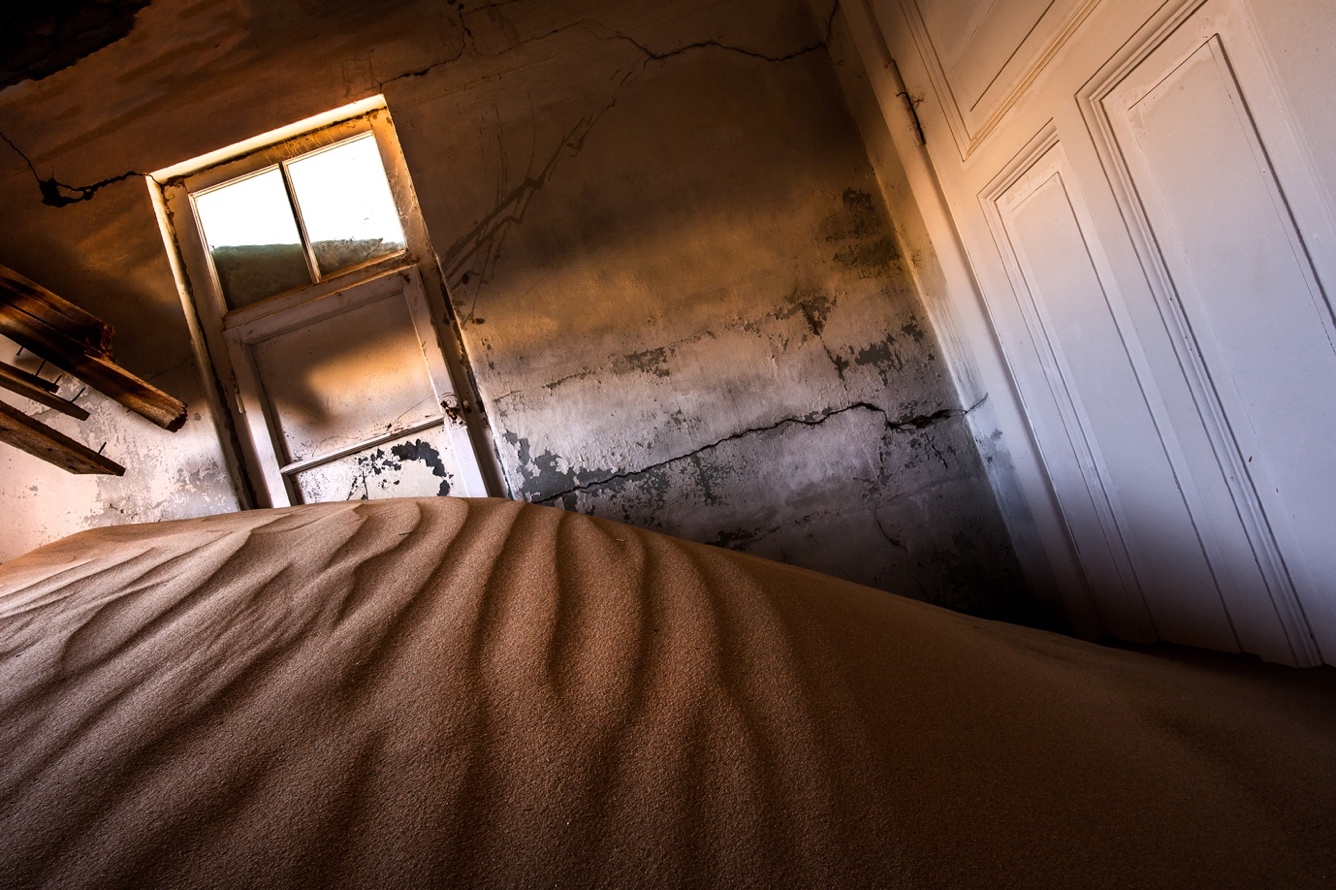
Image Credit Xenia Ivanoff-Erb
Drowning in sand – at Kolmanskop
The visitor to Kolmanskop will find that oftentimes this ghost town is shrouded in a thick blanket of mist early morning, which gives the abandoned settlement an eery goulishness, but the sun soon clears the fog and as it slowly creeps through the window frames, each room in the abandoned houses becomes a thing of otherworldly beauty, its photogenic promise there to be captured by photographers and relished in by visitors. Wind-battered and filled with towering sand-dunes each enchanting space, like the light that floods in across the distressed window-sills, is ever-changing.
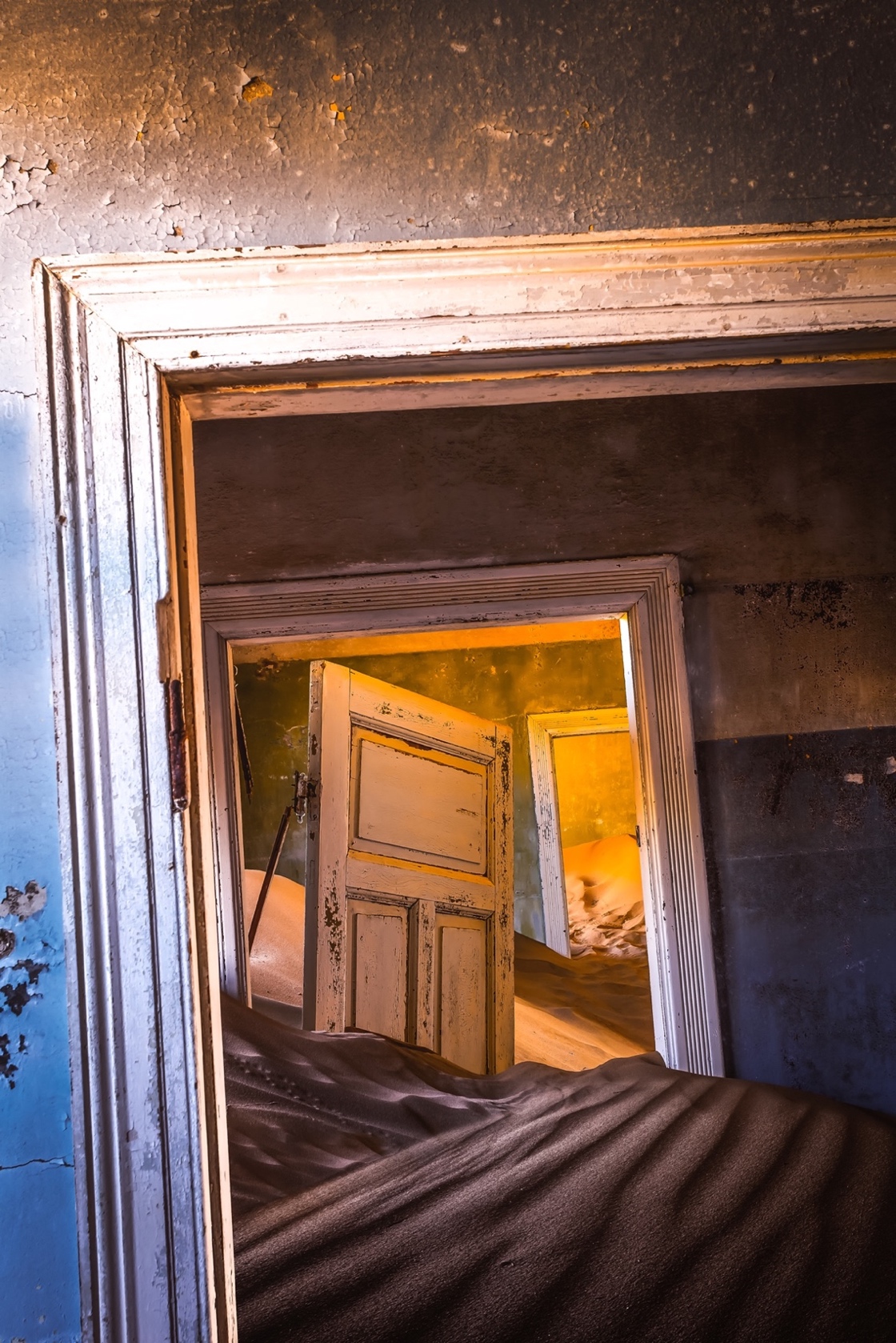
Image Credit Xenia Ivanoff-Erb
A sea of sand – a surreal location for a fashion shoot! – at Kolmanskop
Today this abandoned slice of mid 20th century Germany-in-Africa is a place where the most iconic fashion shoots take place, a sought-after, out-of-this-world location for creating films and advertisements, with in-the-know film crews trekking across the desert with their equipment to capture this unique piece of geography and history.
Under the harsh African sun, in the middle of nowhere, bizarreness doesn’t get any more real than this. With sand blown 10 feet high into the interiors of some of the houses, peeling wallpaper, decades-ago polished handrails and a creaking window blowing open and shut – like something from a Sergio Leone Spaghetti Western – the atmosphere here is like nothing you’ll ever have experienced anywhere else on the planet. (Incidentally, the ‘Whistler’ from Morricone’s The Good, The Bad and The Ugly, Italian Alessandro Alessandroni, ended up living and dying in 2017 just up the coast from Kolmanskop, in the seaside town of Swakopmund at the age of 92.)
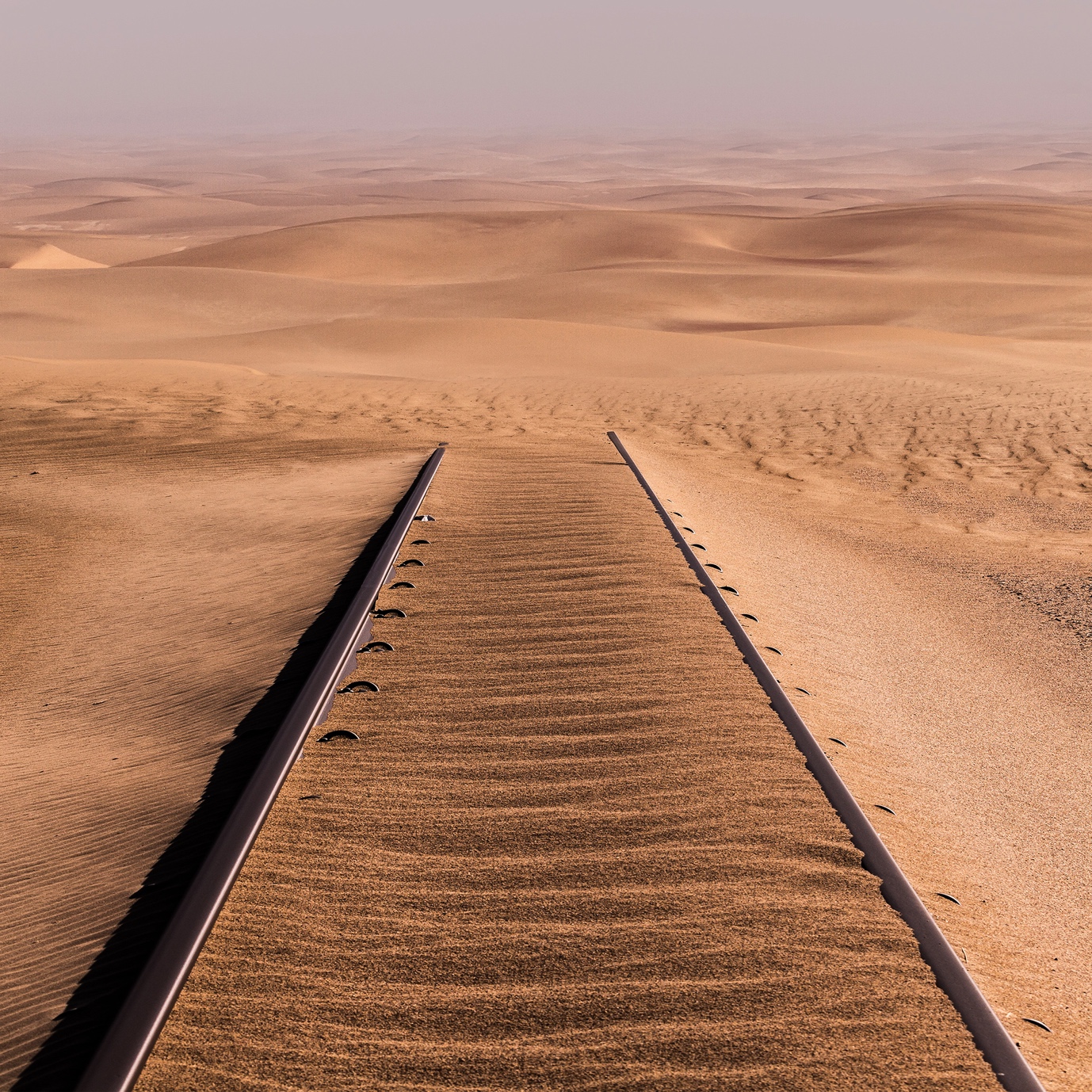
Image Credit Xenia Ivanoff-Erb
The track to nowhere – at Kolmanskop
Through the bashed window-sills one gazes out across the endless desert, imagining what life will have been like all those years ago for a budding European debutante or dapper young mining engineer from Hamburg, perhaps having a rapturous love affair in the desert … or secretly fantasizing about possessing a few of the multitudinous shiny pebbles that lay ever so invitingly just below the first layer of hot desert sand.
If you dare look up at mid-day, the sky is as blue as only a Namibian sky can be, the African sun blasting down from directly above. As the dry dusty day progresses, the arcing sun throws ever-changing shadows of the buildings across the soft rippling sandscape. Harsh white light at noon gives way to the long shadows of glowing golden yellow and red sunsets and tomorrow’s dawn will no doubt emerge in soft turquoise and pink. It’s a moving feast for the eye, an otherworldy spectacle of surreal beauty that should in truth be experienced knee-deep in the warm flowing sand, the caress of the balmy desert wind on your skin … and ideally with a Namibian Rock Shandy or Windhoek Lager in your hand.
I’ll leave you with a word of warning: best not to wear your itsy-bitsy Havaianas when exploring the sand dunes, there are rusty nails – complete with early 20th century Hamburg trademarks – still buried just below the surface. And who knows – perhaps the odd shiny stone.
Where to stay near Kolmanskop:
1 – Klein Aus Vista (http://www.klein-aus-vista.com/accommodation/desert-horse-inn/) offers a rich ‘Africa for Beginners’ experience. See the wild horses of the Namib Desert, visit the ghost town of Kolmanskop and pop into the nearby fishing village of Luderitzbucht while staying in the lap of luxury.
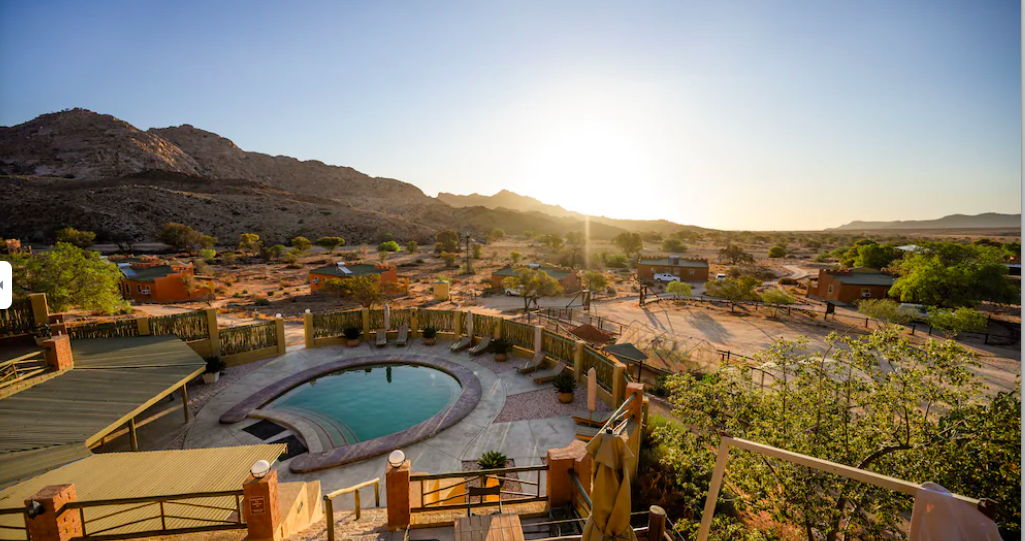
Image Credit Gondwana Collection
(https://www.youtube.com/watch?v=iIaFoCaScfs&ab_channel=GondwanaCollectionNamibia)
Klein Aus Vista offers spectacular views and creature comforts
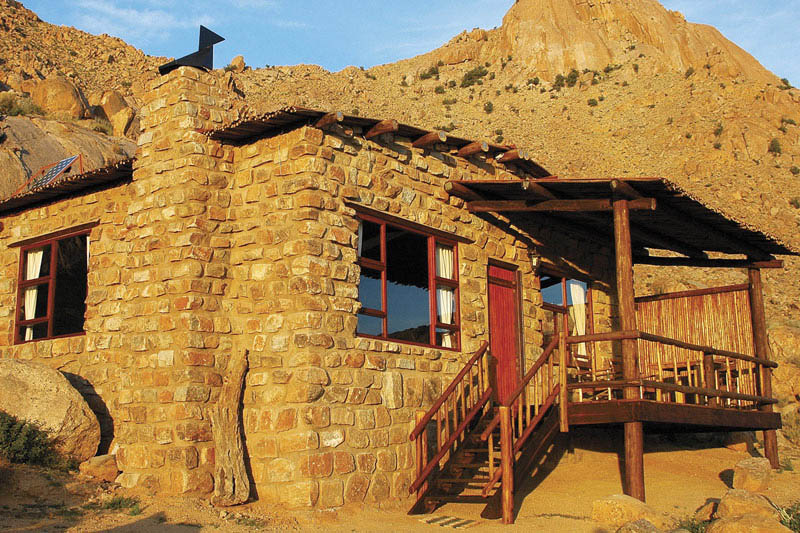
Image Credit Voyage To Africa
The stone-built chalets at Klein Aus Vista
2 – Eagles Nest Lodge Eagles Nest Lodge (http://www.klein-aus-vista.com/accommodation/eagles-nest-chalets/) offers luxe accommodation with silence, solitude and wide open spaces.
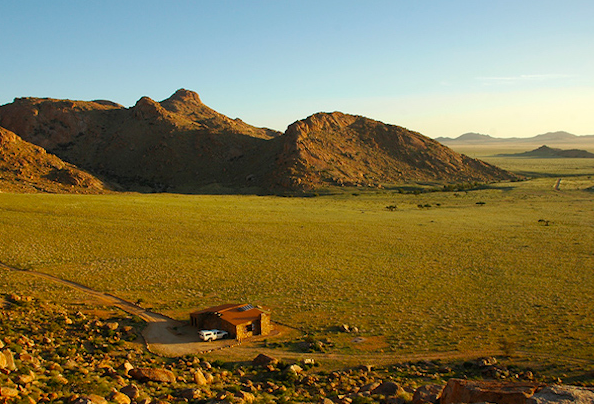
Image Credit Gondwana Collection
Eagles Nest Lodge offers privacy on quite a different level!
3 – The Desert Horse Inn (https://store.gondwana-collection.com/accommodation/klein-aus-vista-desert-horse-inn)
View the hundreds of desert horses roaming the planes from this vantage point.
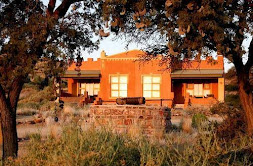
Image Credit Gondwana Collection
The camouflaged desert chalets at the Desert Horse Inn
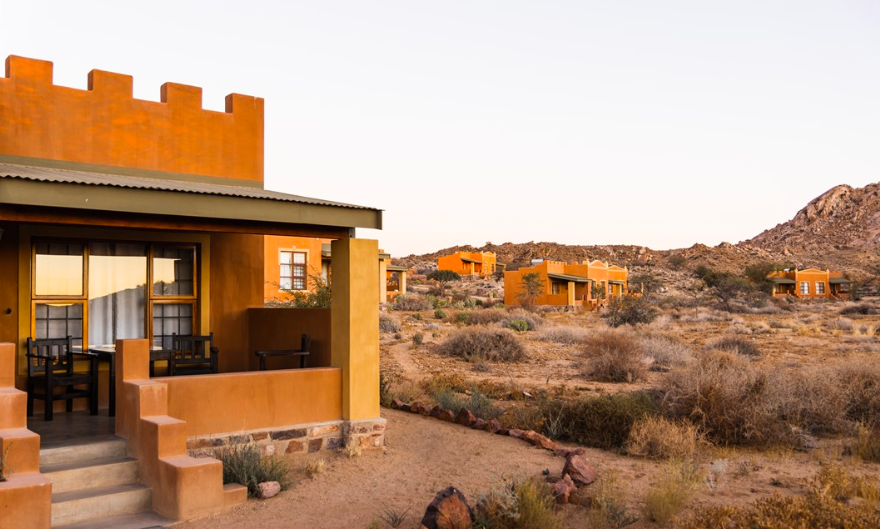
Image Credit Gondwana Collection
Plenty privacy and stunning desert views at the Desert Horse Inn
The quaint seaside town of Luderitzbucht is a stone’s throw away from the ghost town of Kolmanskop and ideally suited for a stay, boasting many hotels, guest houses and restaurants. Their famous crayfish is legendary!

Image Credit Alte Villa Gästehaus (https://www.altevilla.na/)
A view over the picture-perfect fishing village of Luderitzbucht
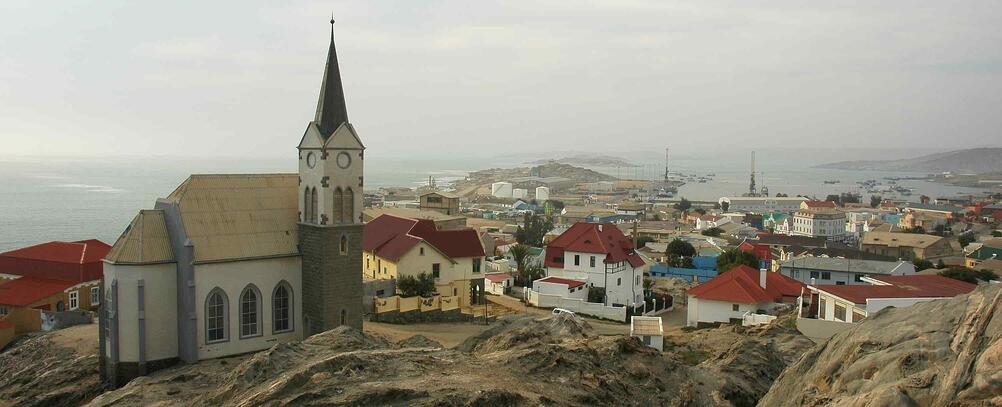
Image Credit Gondwana Collection (https://gondwana-collection.com/blog/everlasting-church-on-a-rock-between-the-desert-and-the-sea)
The quaint town of Luderitzbucht is filled with quaint hotels and guest houses
4 – Luderitzbuch Nest Hotel (https://nesthotel.com/)
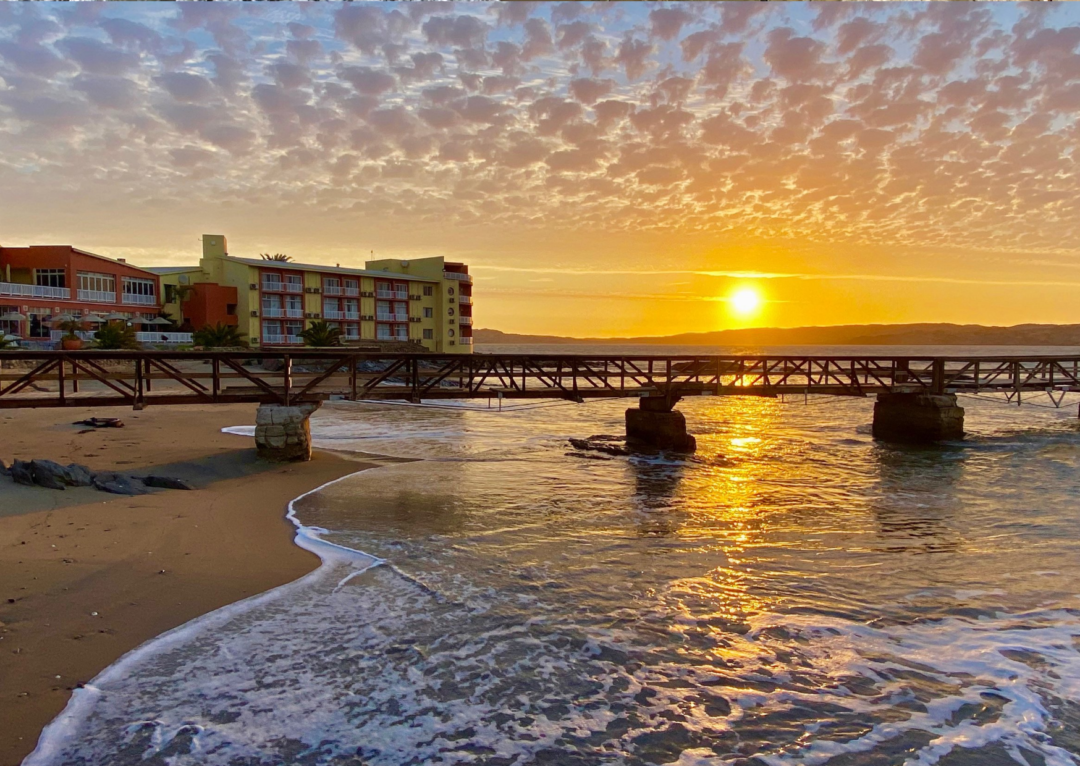
Image Credit Luderitzbuch Nest Hotel
Sunset over the desert and Atlantic Ocean from the Luderitzbucht Nest Hotel
5 – Alte Villa Gästehaus (https://www.altevilla.na/)
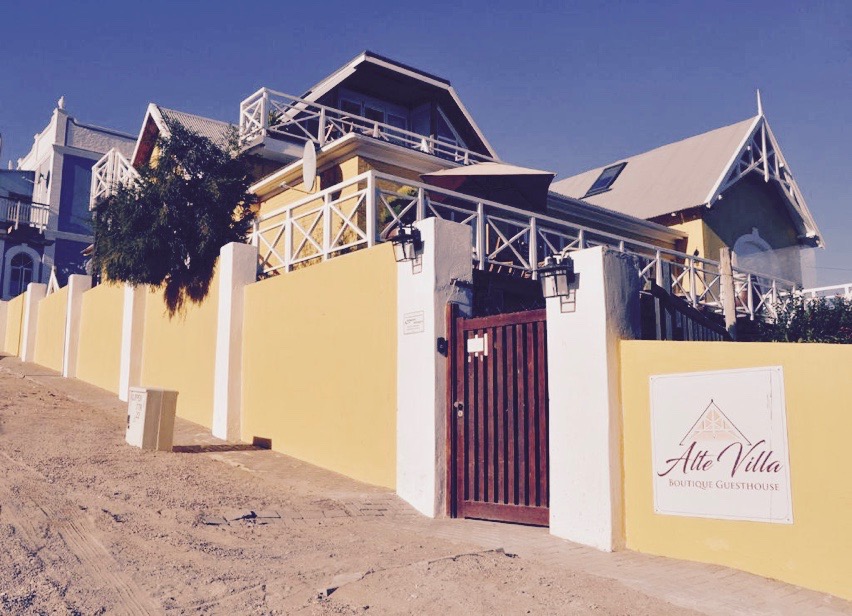
Image Credit Alte Villa Gästehaus (https://www.altevilla.na/)
One of the colourful guesthouses in Luderitzbucht with fabulous views
Where to Buy Diamond Jewellery:
https://www.herrle-herma-jewellers.com/jewellery
https://www.instagram.com/herrleherma/
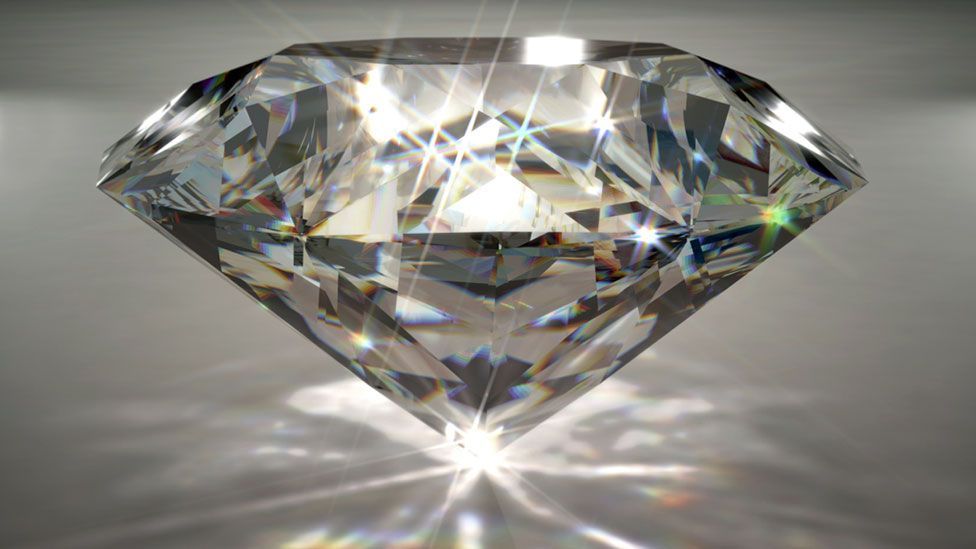
Image Credit BBC Future
Ethiopian Airlines and Eurowing offer regular flights from European cities to Namibia.
Special thanks to Xenia Ivanoff-Erb and Oscar Munar for their photo stories of Kolmanskop.

